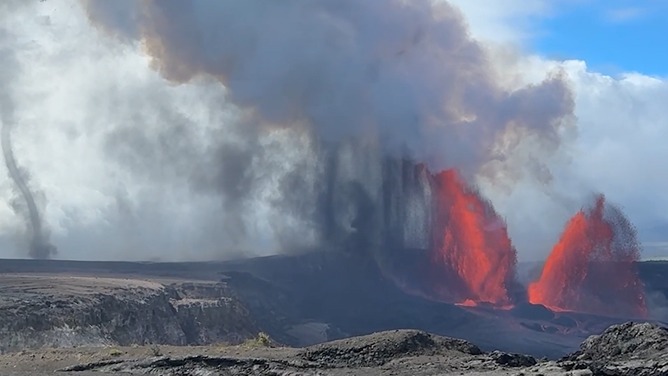
Tucked deep within the emerald-cloaked mountains of Fengjie County in China’s Chongqing municipality lies a colossal opening in the world—a wound in the Earth so vast, so precise, it seems as if carved by something far beyond the forces of erosion. This is the Xiaozhai Tiankeng, the Heavenly Pit, a chasm that has inspired awe, myth, and scientific wonder. To look upon it is to feel a sense of vertigo not just of height, but of time itself.
From above, the sinkhole resembles an ancient eye, staring unblinking into the sky, its rim feathered with trees that seem to cling desperately to the edge. Below, the shadows deepen into unfathomable black. But this is not emptiness—it is complexity hidden from the casual gaze.
Xiaozhai Tiankeng is the world’s deepest known sinkhole. At more than 660 meters (over 2,170 feet) from lip to floor, with a width reaching up to 500 meters and a volume exceeding 130 million cubic meters, it defies expectations of scale. Standing at the edge, a person appears like a leaf beside a canyon. Birds vanish mid-flight before reaching the bottom. The descent into its depths is a journey into another world—one carved by water, time, and subterranean alchemy.
The pit lies within a region known for its karst landscape, shaped over tens of millions of years by the slow dissolution of limestone by rainwater. Underground rivers snake through the porous rock, sculpting vast chambers. Over time, roofs collapse, revealing these enormous openings to the sky. The Xiaozhai Tiankeng is believed to have formed in this exact way: through the collapse of an enormous subterranean cavern system. What remains is not merely a hole, but the visible anatomy of the planet itself.
And this hole lives.
Far from barren, the interior of the Heavenly Pit shelters its own self-contained ecosystem. Trees hundreds of years old thrive on ledges and terraces. Mists gather in the early morning and linger like breath. Insects and birds endemic to the region coexist in isolation, some species found nowhere else on Earth. Scientists have reported at least three separate forest layers within the sinkhole, with varying microclimates depending on depth and light. It is a vertical world—a green spiral of life tucked away from human hands.
At its base runs an underground river known as the Difeng River, which disappears into a cave, only to reemerge kilometers away. The echo of water moving through this great hollow space is like the voice of the Earth itself—soft, persistent, eternal. For cavers, reaching the bottom is a multi-day expedition requiring rope descents, specialized climbing gear, and the stamina to endure tropical humidity and shadowed silence. For scientists, it is a window into evolutionary isolation, a place where time moves differently.
Locals have long told stories about the Tiankeng. Some believe it is a gate to the underworld. Others say it was formed by dragons descending to the earth. In ancient texts, such dramatic holes were considered heavenly signs—omens that the Earth was alive, and listening. And perhaps that’s not so far from the truth. This formation was not built by man, nor intended for his use. It exists entirely on its own terms, reminding us of the scale of nature’s patience—and our own insignificance within it.
What’s most haunting about the Xiaozhai Tiankeng isn’t just its size—it’s the sense that it doesn’t quite belong to the surface world. It feels like a place we were never meant to see. Unlike mountaintops that demand to be climbed or oceans that invite exploration, this hole resists. It pulls downward. It is a space that hides rather than reveals, that challenges the sunlight to reach its floor.
And yet, it calls to us.
Not just adventurers, but dreamers. The Heavenly Pit has been featured in documentaries and nature journals, but also in fictional tales of lost worlds and ancient civilizations. Its geometry is so surreal—almost mathematically perfect in its rounded edge—that one can’t help but imagine it as a landing site, a buried monument, or a natural observatory aligned to some stellar secret.
But perhaps its greatest power is the way it alters our perspective. Standing before it, even in pH๏τographs, we are reminded that the Earth is not just a stage upon which we act—it is an actor itself. It folds, collapses, exhales. It remembers. The forests below have grown without us, flourished without our tools or roads or voices. They remind us of the world before us—and perhaps the world after.
The Xiaozhai Tiankeng humbles. It inspires. It warns.
For in its impossible silence lies a simple truth: that the most profound wonders of this planet are often not the ones we build, but the ones that simply are.
So the next time you look at a mountain, ask yourself: what lies beneath? What stories might the Earth be whispering, if only we listened—not outward, but downward?
What might be waiting in the places we are not yet meant to reach?
<ʙuттon class="text-token-text-secondary hover:bg-token-bg-secondary rounded-lg" aria-label="Chia sẻ" aria-selected="false" data-state="closed">


